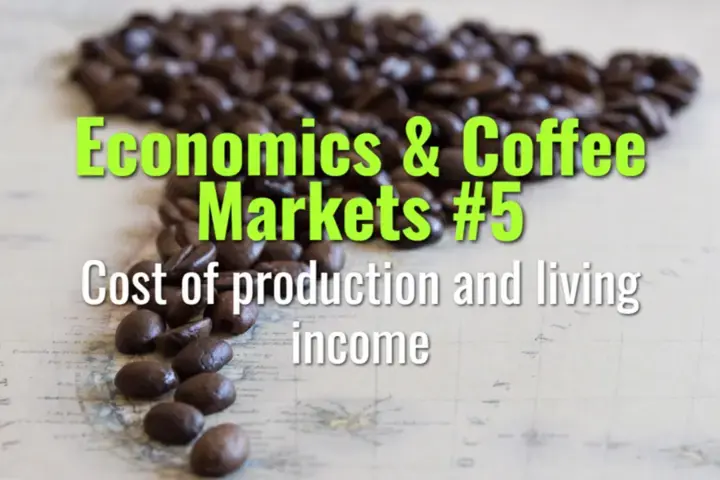Cost of production and living income
How to assess the cost of coffee production at origin and why achieving a living income for farmers is central to sustainability and market ethics.
- Coffee Basics Nerds
- 2 min read
Article 5 of 12 in Economics & Coffee Markets/

Cost of Production (CoP)
- Definition: The total expense a farmer incurs to produce a unit of coffee.
- Components:
- Variable Costs: Fertilizers, labor for harvesting, processing inputs.
- Fixed Costs: Land use, equipment depreciation, interest on loans.
- Indirect Costs: Certification fees, transport, cooperative contributions.
- Variation: CoP differs by country, farm size, altitude, and farming system (organic vs conventional).
Living Income Concept
- Definition: The income a household requires to afford a decent standard of living (food, housing, education, healthcare, savings).
- Difference from Minimum Wage: Living income benchmarks are often higher and context-specific.
- Coffee Relevance: Many producers earn below living income, even when coffee prices rise.
Relationship Between CoP and Income
- If market price < CoP → farmer loses money.
- If market price > CoP but < living income benchmark → farmer survives but cannot invest in future sustainability.
- Long-term sustainability requires prices covering both CoP and living income.
Example Calculation
- Cost of production = $1.50/lb.
- Living income benchmark = $2.50/lb.
- If coffee sells at $1.80/lb → above CoP, but farmer still below living income.
Why It Matters
- Farmers lacking living income:
- Reduce farm inputs → lower yields and quality.
- Exit coffee farming → threaten supply stability.
- Face food insecurity and poverty cycles.
Strategies for Improvement
- Living Income Benchmarks: Developed by NGOs and certification bodies.
- Direct Trade Premiums: Roasters paying fixed prices above CoP + margin.
- Diversification: Encouraging intercropping and secondary income sources.
- Policy & Aid: Government support, cooperative bargaining power.
Summary
Cost of production sets the baseline, but true sustainability demands coffee prices that also deliver a living income. Addressing this gap is key to farmer well-being, long-term supply security, and the ethical credibility of the coffee industry.